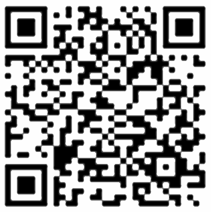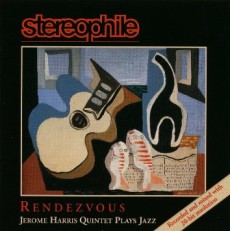
Daily Dose Of Jazz…
Jerome Harris was born April 5, 1953 in Flushing, New York and was already a skilled musician by the time he entered Harvard University with the intent of becoming a psychiatrist. During his college years he became known as a guitarist on campus who played in a variety of bands, from R&B to free jazz, including a fusion band with fellow student, drummer Akira Tana.
After graduation he decided to focus on music full-time and first began appearing on recordings during the late ’70s. He came to prominence in 1978 playing bass guitar and guitar with tenor saxophonist Sonny Rollins, with whom he would perform and record intermittently until the mid-1990s. Jerome went on to work with drummers Jack DeJohnette, Paul Motian, Bob Moses, David Krakauer, Ray Anderson, Amina Claudine Myers, Don Byron and Marty Ehrlich among others.
He has recorded four albums as a bandleader for Muse, Polygram, New World and Stereophile record labels. His recording sideman duties have been wth Robert Dick, Bill Frisell, Julius Hemphill, Hank Roberts, Pheeroah Aklaff, Kenny Werner, Malias, Ned Rothenberg, George Russell and Bob Stewart, to name a few.
In addition to performing he played a major role in a 1999 New York City tribute concert to Joni Mitchell, in which he wrote many of the transcriptions and arrangements. He has toured internationally in various ensembles to Japan with Rollins, the Middle East and India with Jay Hoggard, Africa with Oliver Lake and the United States with Bob Previte’s Latin for Travelers. Guitarist and bassist Jerome Harris continues to perform, record and tour.
![]()
More Posts: guitar
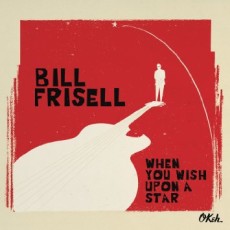
Daily Dose Of Jazz…
Bill Frisell was born William Richard Frisell on March 18, 1951 in Baltimore, Maryland, but spent most of his youth in the Denver, Colorado area. He studied clarinet with Richard Joiner of the Denver Symphony Orchestra as a youth, graduated from Denver East High School, and went to the University of Northern Colorado to study music. His original guitar teacher in Denver was Dale Bruning, then after studying with Johnny Smith and graduating from Northern Colorado, Bill went to Berklee College of Music and studied with Jon Damian and Jim Hall.
Frisell’s major break came when guitarist Pat Metheny was unable to make a recording session, and recommended Frisell to Paul Motian who was recording Psalm in 1982 for ECM Records. This led to his becoming ECM’s in-house guitar player, and worked on several albums. His first solo release was In Line, featuring solo guitar and duets with bassist Arild Andersen.
Frisell’s first group to receive much acclaim was a quartet with bassist Kermit Driscoll, drummer Joey Baronon and Hank Roberts on cello. Many other albums with larger ensembles were recorded with this trio as the core after the departure of Roberts.
In the 1980s he lived in Hoboken, New Jersey and his access to New York City had him active in the city’s music scene. He forged an early partnership with John Zorn, was a member of the quick-change band Naked City, and became known for his work in Motian’s trio, along with saxophonist Joe Lovano. By 1988 he moved to Seattle, Washington and in the early 1990s Bill made two of his best-reviewed albums: his survey of Americana with Have A Little Faith and This Land, a complementary set of originals.
Frisell has recorded with Jan Garbarek, Douglas Septemberon, Ryuchi Sakamoto, Rickie Lee Jones, Elvis Costello, Suzanne Vega, Arto Lindsay, Loudon Wainwright III, Vic chestnut, Van dyke Parks, Buddy Miller, Ron Sexsmith, Chip Taylor, Fred Hersch, John Pizzarelli, Matt Chamberlain, Tucker Martine and Lee Townsend among others.
He has branched out by performing soundtracks to silent films of Buster Keaton, provided music for his friend Gary Larson’s TV version of The Far Side, contributed music to the 2000 film Finding Forrester, and has won a Grammy in 2005. Over the past decade guitarist Bill Frisell, who also plays clarinet and tenor saxophone, has continuously performed, recorded and toured.
More Posts: guitar
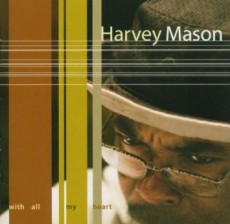
Daily Dose Of Jazz…
Harvey William Mason was born on February 22, 1947 in Atlantic City, New Jersey. He began taking formal drum lessons at the age of seven, playing in various school bands and ultimately buying his first drum kit at 16. He went on to attend Berklee College of Music then on to and graduate from the New England Conservatory of Music.
While in Boston, Harvey worked at Triple A Studios recording everything from jingles to religious albums, molding him into a versatile first-call session musician. Early gigs included four months with Erroll Garner in 1970 and a year with George Shearing from 1970-1971. Soon after leaving Shearing he moved to Los Angeles, California and quickly became established in the studios and working in films and television.
In addition to his work through the years with Minnie Riperton, The Sylvers, Earth, Wind & Fire and Carlos Santana, Mason has often been part of the jazz world. He played with Herbie Hancock’s Headhunters, co-composing the hit Chameleon in 1973, Gerry Mulligan, Freddie Hubbard, Donald Byrd, Grover Washington, Jr., George Benson, Gary Bartz, Bobbi Humphrey, Ralph MacDonald, Chick Corea, Lee Ritenour, Victor Feldman and Bob James, Gene Harris, Eddie Henderson, Bobby Hitcherson and Joe Henderson, among numerous others.
By 1998, Harvey was paying tribute to Art Blakey’s Jazz Messengers in some local Los Angeles club gigs. By the turn of the millennium he was continuing with his steady session work, releasing two albums with Trios and With All My Heart and has since revisited his ’70s Headhunters roots. He is a mainstay in the fusion genre as a member of the group Fourplay along with Chuck Loeb, Nathan East and Bob James, whose success led their debut album to hit and stay at the top of the charts for 34 weeks.
He has worked with Michael Colombier, Michel Legrand, Miles Davis, Dave Grusin, Thom Newman, John Williams, Lalo Schifrin, Isaac Hayes, Johnny Pate and Alan Silvestri on such films as Purple Rain, Dingo, Three Days of the Condor, The Fabulous Baker Boys, On Golden Pond, The Player, The Lion King, Mission Impossible 1,2 & 3, Ratatouille and Dream Girls. In addition he composed the music for the films The Color Purple, Only The Strong and Deadly Takeover.
Multi-Grammy nominated and winning drummer and composer Harvey Mason continues to stretch his musical diversity across four decades and many jazz genres.
More Posts: drums
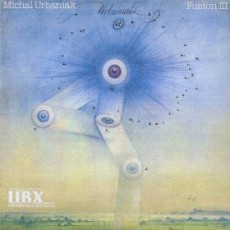
Daily Dose Of Jazz…
Michał Urbaniak was born on January 22, 1943 in Warsaw, Poland. He started his music education during high school and continued from 1961 in Warsaw in the violin class of Tadeusz Wronski. Learning to play the saxophone he first played in a Dixieland band, and later with Zbigniew Namyslowski and the Jazz Rockers, performing during the 1961 Jazz Jamboree festival.
The following year Michal played with Andrzej Trzaskowski band, The Wreckers, touring festivals and clubs in the USA in Newport, San Francisco, Chicago, Washington and New York City. A return to Poland saw him working with the Krzysztof Komeda Quintet from 1962 to 1964, touring Scandinavia and remaining to form his own band with Wojciech Karolak, that became starting point for the famous Michał Urbaniak Fusion.
Urbaniak returned to Poland and the violin, and created the self-named Michał Urbaniak Group, to which he invited, among others, vocalist Urszula Dudziak, pianist Adam Makowicz, bassist Pawel Jarzebski and on drums Czeslaw Bartowski. Their debut recording on the international scene was in 1970 with Parathyphus B, and during the Montreux ’71 festival, he was awarded “Grand Prix” for the Best Soloist and a scholarship to the Berklee Colege of Music, though he declined to attend.
He played his final concert in Poland in 1973 and emigrated with Urszula Dudziak to the United States, signed with Columbia Records, formed the band Fusion and released Super Constellation. His 1978 Urbanizer project fused rap, hip-hop and a R&B vocal quartet. By 1995 he was engaging a 60-piece full symphony with jazz group, rapper and Apple computer in concert and recorded both CD and DVD.
Over the course of his career he has performed and recorded with Steve Jordan, Marcus Miller, Kenny Kirkland, Tony Bun, Omar Hakim, Victor Bailey, Weather Report, Freddie Hubbard, Elvin Jones, Herbie Hancock, Chick Corea, George Benson, Billy Cobham, Joe Zawinul, Ron Carter, Kenny Barron, Buster Williams and Quincy Jones.
Violinist Michal Urbaniak played on the 1985 session of the Miles Davis Tutu album and in 2012 appeared in the Polish film My Father’s Bike. He hs recorded thirty-eight albums to date and continues to perform, record and compose.
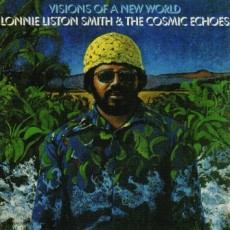
Daily Dose Of Jazz…
Lonnie Liston Smith, Jr. was born into a musical family on December 28, 1940 in Richmond, Virginia. With his father a member of Richmond Gospel music group The Harmonizing Four, as a child he was privy to groups such as the Swan Silvertones and the Soul Stirrers with a young Sam Cooke at his house. He learned piano, tuba and trumpet in high school and college, graduating from Morgan State University in Baltimore, Maryland with a degree in music education.
Influenced by Charlie Parker, John Coltrane and Miles Davis, while still a teenager at college, Smith became well known locally as a backing vocalist and pianist. He played the Baltimore area with Gary Bartz, Grachan Moncur, Mickey Bass, backed Betty Carter and Ethel Ennis and played in the house band at the Royal Theatre.
1963 saw him moving to New York, once again with Carter for a year followed by Rahsaan Roland Kirk and recording Here Comes The Whistleman. After this stint with Kirk he joined Art Blakey’s Jazz Messengers sharing the piano seat with Mike Nock and Keith Jarrett and then with Max Roach. He would go on to play with Pharoah Sanders improvising and pushing the creative boundaries of free jazz. It is at this point that Smith began experimenting with electric keyboards:
In 1969 Lonnie also backed Sanders vocalist Leon Thomas on his first album Spirits Known and Unknown, played with Gato Barbieri on The Third World, and with Miles Davis for On The Corner. He formed the Cosmic Echoes in 1973 with Cecil McBee, George Barron, Joe Beck, David Lee, James Mtume, Sonny Morgan, Badal Roy and Geeta Vashi. The group blended fusion, soul and funk on several recordings for Flying Dutchman Records over the next twelve years.
After the crossover success of the 1970s, he moved into the smooth jazz format, however, public interest slowly waned. By the mid-Eighties he returned to his acoustic roots with McBee and Al Foster recording a session of standards for Bob Thiele’s Startrak label. But dealing with the labels bottom line he returned to smooth jazz working with Phyllis Hyman and Stanley Turrentine. He also delved into hip-hop working with rapper Guru on his groundbreaking Jazzmatazz, Vol. 1. Pianist and keyboardist Lonnie Liston Smith established his own label Loveland, gathered greater recognition with Sony International distributing his Cosmic Echoes years, and has since continued to compose, record and tour to festivals worldwide.
More Posts: piano


